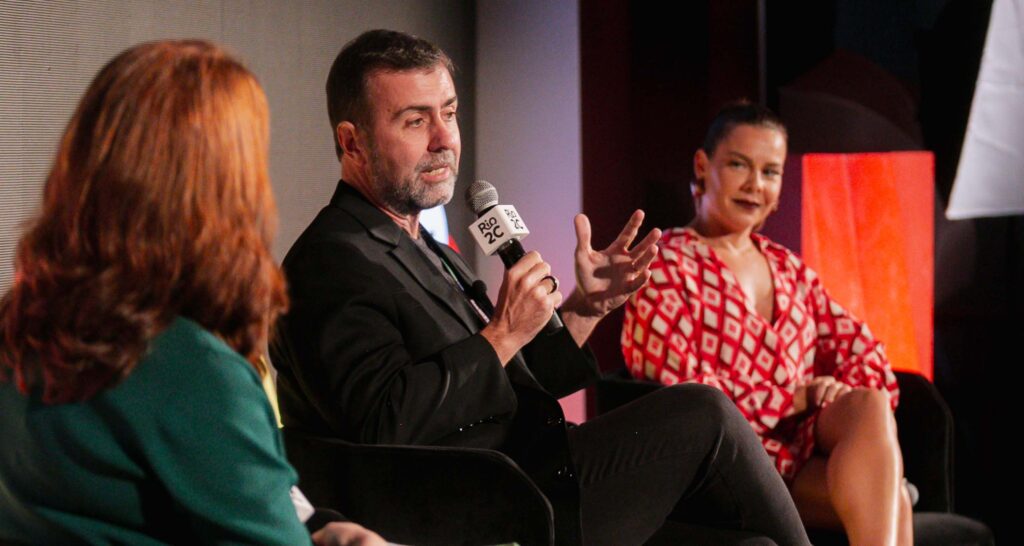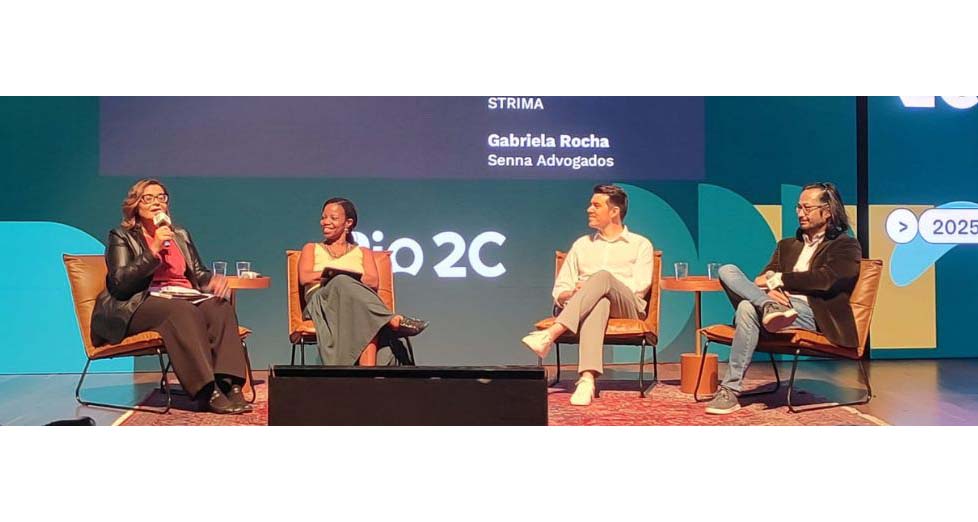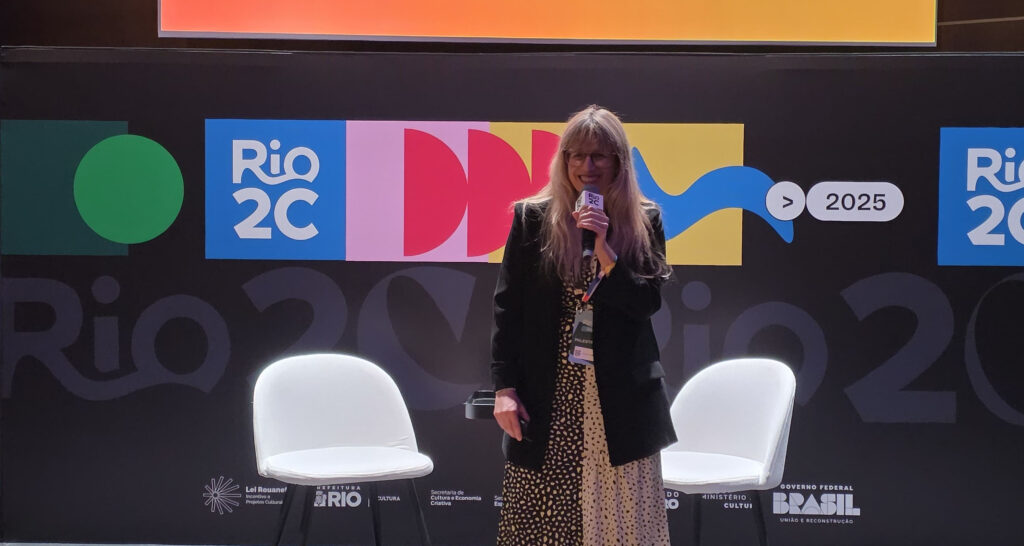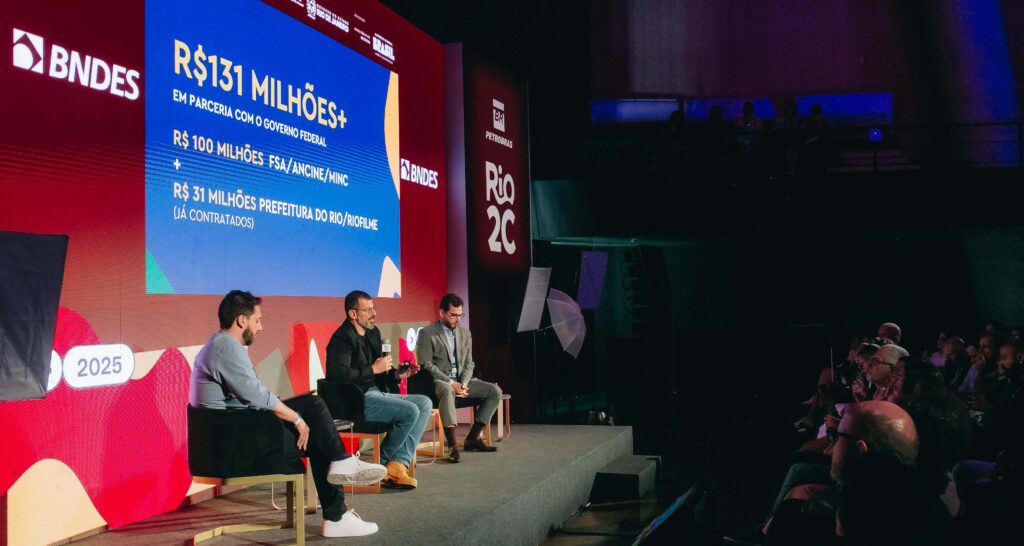The entertainment and media industry continues to find new ways to deliver new type and format of contents to consumers. Podcasting is one of the most significant and steady growth segments that is being analyzed in the special report from Prensario International. Why and how this industry can synergize with the global content industry?

According to Podcasts Insight there are currently over 2 million active podcasts and more than 48 million podcast episodes; and according to a recent study from Edison Research and Triton Digital, just in the USA, approximately 80 million Americans are now weekly podcast listeners.
Edison assured that the popularity of the segment has been growing steadily: as for April 2021, Apple Podcast counted 2,118,515 podcasts and 48 million episodes, and 542 episodes added per day. Moreover, 78% of the Americans are familiar with the medium, represented an up 3% from 2020, and from this figure, one-third of Americans (104 million) ages 12+ regularly consume podcasts content; and 116 million listened to a podcast in the last month, and 22% listen to podcasts weekly.
Edison also believes that the podcast industry is being popular because of the convenience factor: it grew alongside the advent smartphones, digital devices like smart speakers and in-dash entertainment systems.
Advertising & Audience
Although computers and laptops being popular among all podcasts listeners, 65% of listeners in the US user devices such as smartphones and tablets to listen to podcasts (Edison Research). That’s why the advertisers are even more interested in podcast industry.
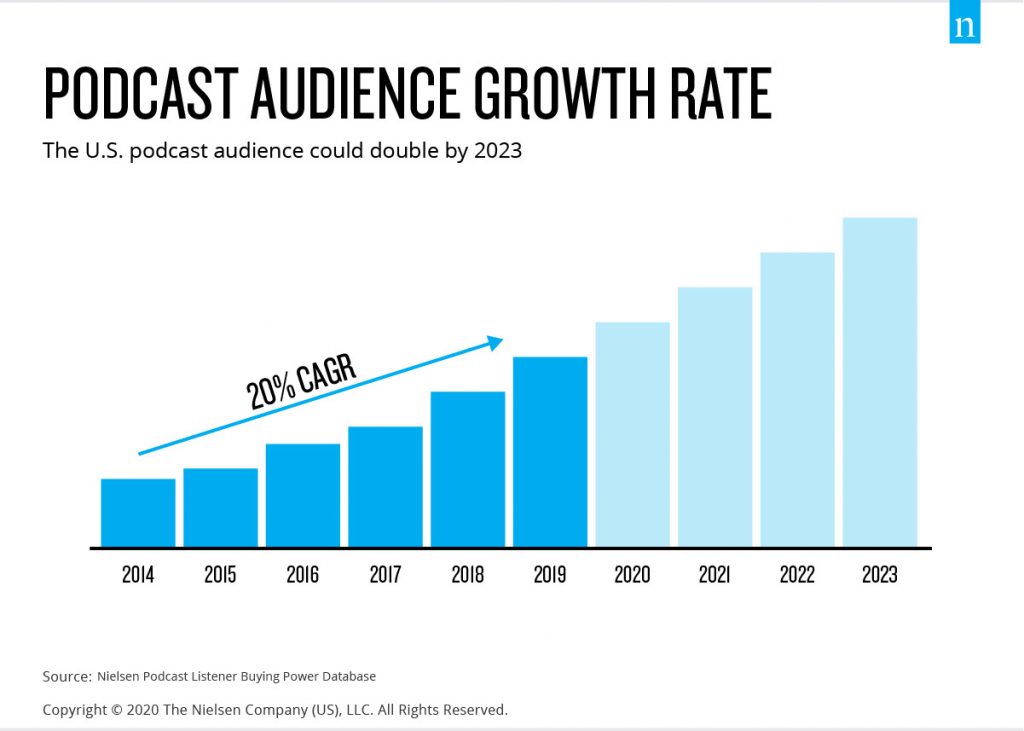
Podcasts are also being consumed while on the move (64%) but the listeners also choose to tune in while in a car or truck (49%), walking around and commuting (37%). In USA, listeners aged 12-34 are the segment that consumption more podcasts content with 56%, followed by age 35-54 with 39%; and age 55+ with 26%.
According to the consultants, there is a relatively equal balance of men and women who tune into podcasts, according to Edison report, there are more men than women who listen to podcasts on a monthly basis, 43% and 39%, respectively. More specifically, 36% of men listen to podcasts at least once a month compared to 29 percent of women.
In addition, a recent survey made by Midroll, explained that 66% of podcast listeners have a college degree and an average annual household income of $ 75,000 or more. As for international statistics, the USA still domains the podcast market, but most continue to see numbers rise every year.
In the UK, as of 2020, 18% of adults listen to podcasts every week, 4% more respect 2019, according Rajar Audio Measurement. While in Canada, a survey made by Edison Research, currently said that 36% of the population 18+ listen to a podcast every month, representing an up from 28% in 2018. According to Statista, half of Italians between ages 18 and 34 have listened to a podcast the last year, being the music program the most demanded genre on 45% of listeners, followed by news programs.
Podcast awareness went up 4% in 2020 in Australia, and 25% of the country listened to a show in the last month.Also, podcasting is growing fastest in the following countries (according to Voxnest): Chile (83.9%), Argentina (55.3%), Peru (49.1%), Mexico 47.8%), and China (43.6%).
Brands, streamers and genre
The Edison Research survey explained that currently 62% of American have listened a podcast show in a car using their smartphone, while 18% of people ages 18+ own a vehicle with a smart entertainment system.

In addition, regarding streaming audio platforms, Apple Podcast is #1 in download numbers, and marked 29.3% of podcast users and 23,229,971 downloads, according to Buzzprout Global Stats. These figures are followed by Spotify with a close second position of 29.3% and 23,180,132 downloads; and Google Podcast, with 2.8% of podcast listeners and 2,212,235 downloads. Statista showed that 22% of podcast listeners in the USA prefers comedy as a genre; followed by news, true crime, sports, and heath/fitness.
The penetration that the podcast is having on the audience is being taken advantage of by advertisers, who are taking advantage of the niches where this content is reaching. Statistics show that 54% of podcast listeners are more likely to consider buying from a brand after hearing an ad on podcast content (eMarketer). Midroll also explained that 60% of podcast listeners have bought something from a podcast ad.
In addition, according to Nielsen, 41% of US podcast listeners are non-white, making the podcast audience one of the most diverse in the media ecosystem. Within these groups, Hispanic listeners have had a great preponderance.
‘Not only is the growth of the Hispanic audience is noteworthy, but it’s important for content creators and advertisers to understand that the podcast genres that Hispanics engage with are notably different from what other groups listen to. For example, kids and family podcasts rank highest among Hispanic consumers, a genre that doesn’t even rank in the top five genres among Whites or Asian-Americans’, noted Nielsen.
Content focus
USA is one of the most established countries in the podcast segment, as indicated. In this market, several series and content for TV have come to life beyond the screens, including: Up and Vanished (2020), Payne Lindsey’s true-crime podcast first became a successful two-part special on Oxygen, exploring the disappearance of Georgia school teacher Tara Grinstead. And then it became a series, with Payne and his team exploring a new case in each episode.
Also, Slow Burn (2020), a true-crime podcast hosted by Leon Neyfakh that is now a docuseries on EPIX. Similar to the podcast, Neyfakh dissects historical figures and events and outlines how the lesser-known subplots behind the stories have changed history.

